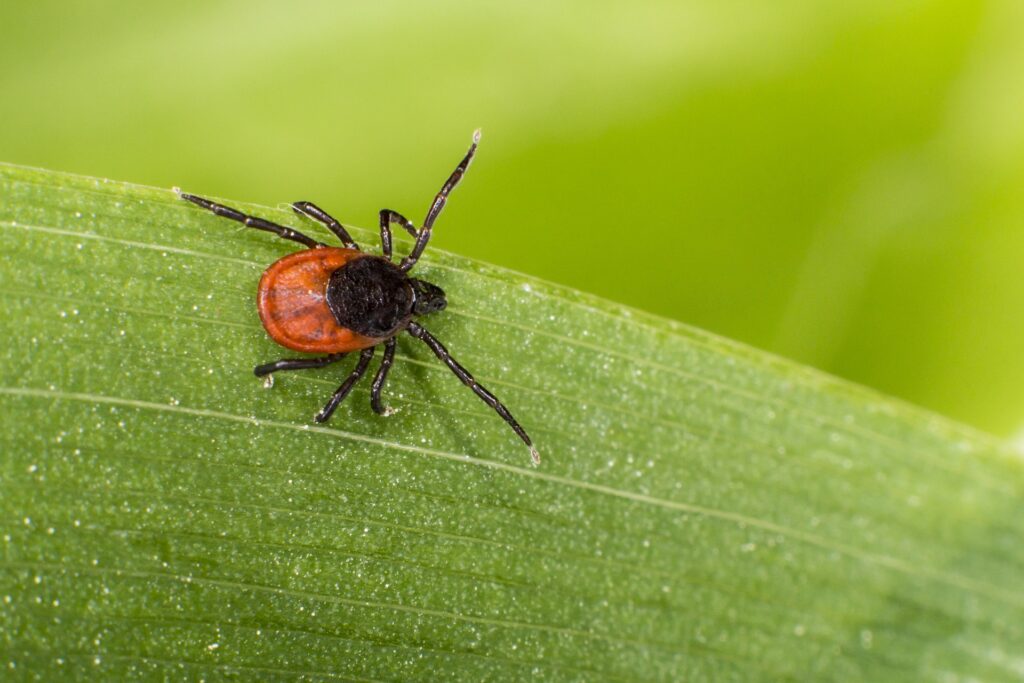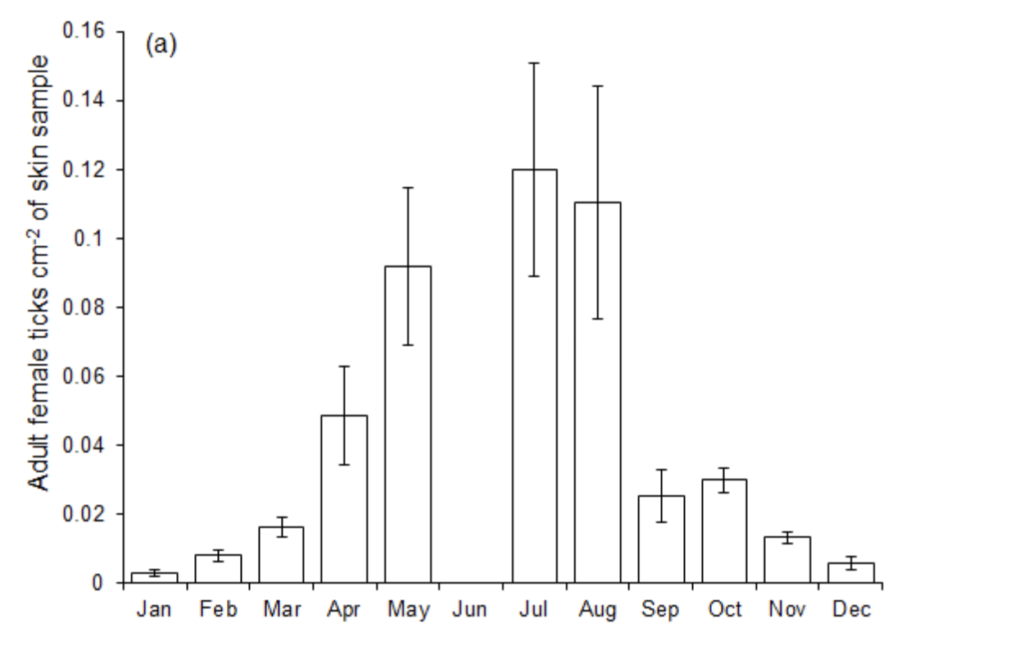Ticks are present in Scotland and carry diseases. If they bite you, those diseases can be spread to you. Lyme disease is the most common tick-borne disease but there are others present in Scotland. To protect yourself, it is important that you learn what ticks look like, how to avoid being bitten, and how to remove a tick safely if you are bitten.
About Ticks

- Ticks are tiny parasites related to spiders, mites and scorpions. There are many different species of tick in Europe. The most common tick in Western Europe is Ixodes ricinus, known by various names including the Castor Bean Tick, Deer Tick, or Sheep Tick.
- Ticks commonly inhabit woodland, bogs and grassy areas, but you can also be bitten by infected ticks in parks and gardens, and even on beaches or in your own home after pets bring them indoors.
- Ticks are present all over Scotland and are most prevalent in the Highlands.
Ticks are normally very small and go through three main stages:
- Larva
Larvae have 6 legs and are 0.5mm across, about the size of a pin head. Unless you look closely, they can be mistaken for a tiny splinter of wood or thorn. - Nymph
Nymph ticks have 8 legs and are about 1.5mm across. - Adult
Adult ticks have 8 legs and are 2-3mm across, about the size of a sesame seed. Females are larger than males.
The nymph is the most dangerous life stage because:
- Nymphs are far more numerous than adults.
- Humans are less likely to detect them because they are so small and therefore hard to spot.
- One hardly feels a nymph moving on the skin, in contrast to an adult female.
Ticks feed on the blood of mammals and birds. After feeding, their bodies swell to 20 times their original size.



Ticks are active throughout the whole year, but in greatest abundance in early and late summer.
About Lyme Disease
Lyme disease is an increasingly common bacterial infection transmitted by the bite of an infected tick. Cases in Scotland have increased almost 10-fold since 2000. Symptoms are wide-ranging and can include rash, fever, fatigue, muscle soreness, tingling, neuropathy, light sensitivity, headache, nausea, vomiting, heart complications, face paralysis, and hearing loss.
Antibiotic treatment within a few weeks of infection is normally effective, but delay in treatment can result in chronic debilitating illness, which is more difficult to treat.
You are at risk anywhere in Scotland. Depending on the area, between 0 and 14% of ticks in Scotland are infected with Lyme disease. Studies have shown that on average approximately 2-5% of ticks in Scotland are infected.
Ticks can also transmit other infections, such as Rickettsiae, Bartonella and Babesia. If you develop a rash or feel unwell following a tick bite then seek urgent medical advice.

Learn How to be Safe
Protect yourself from tick bites before you go out.